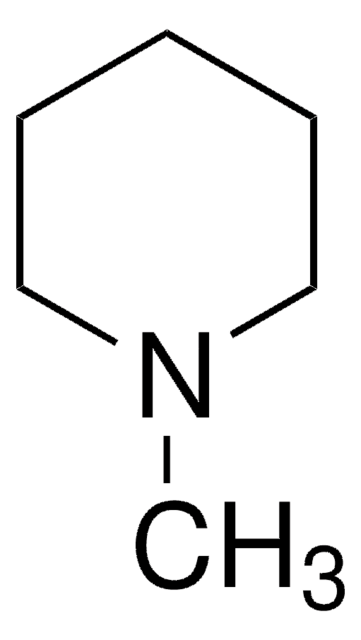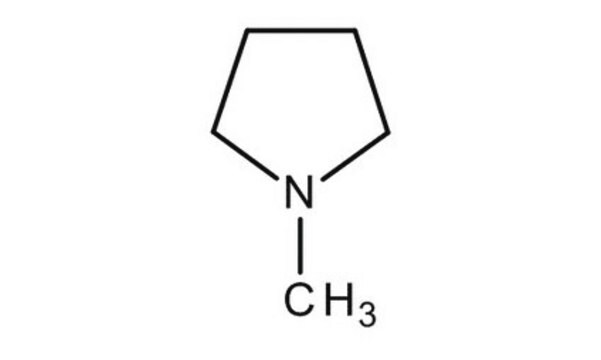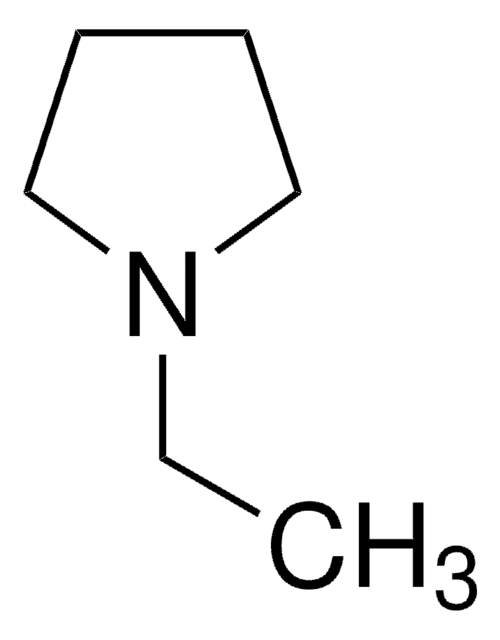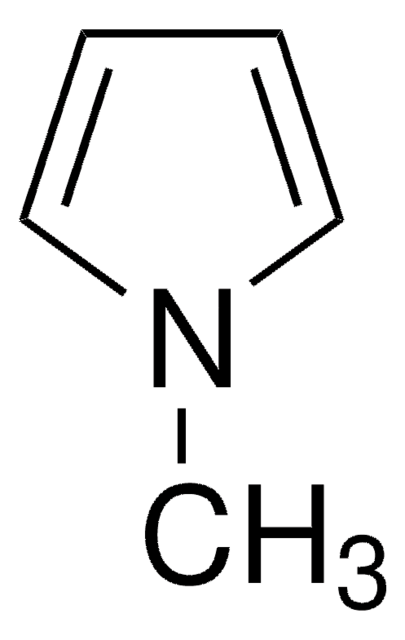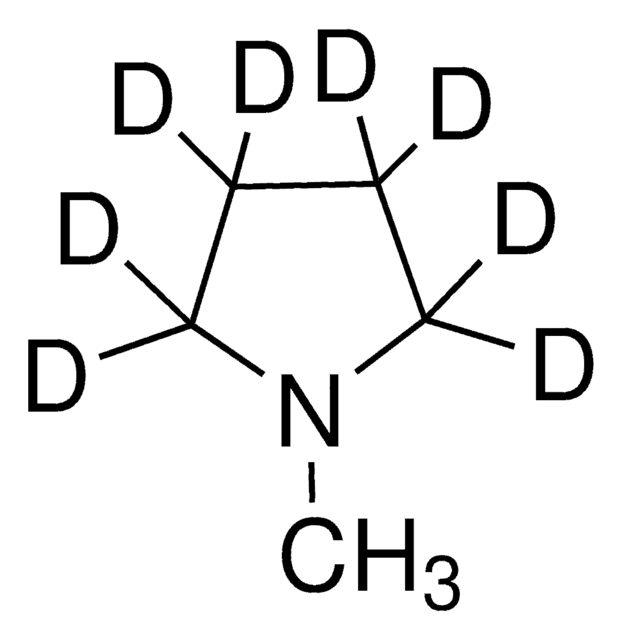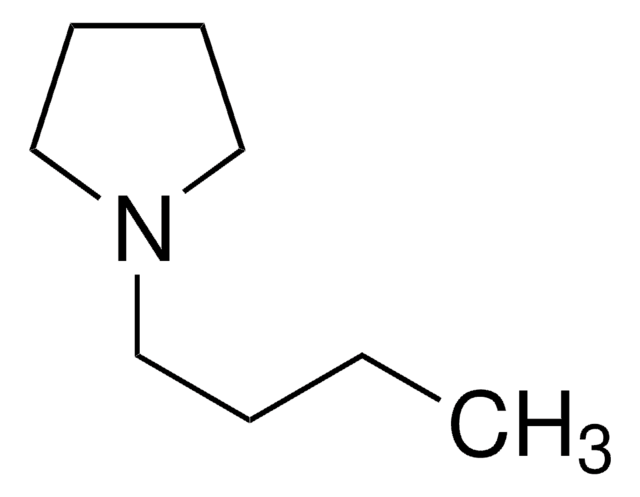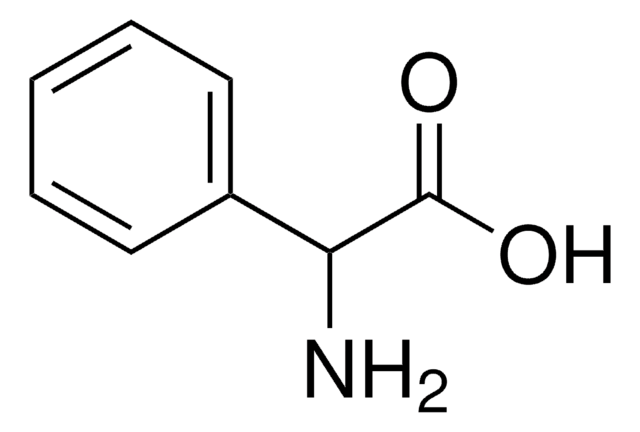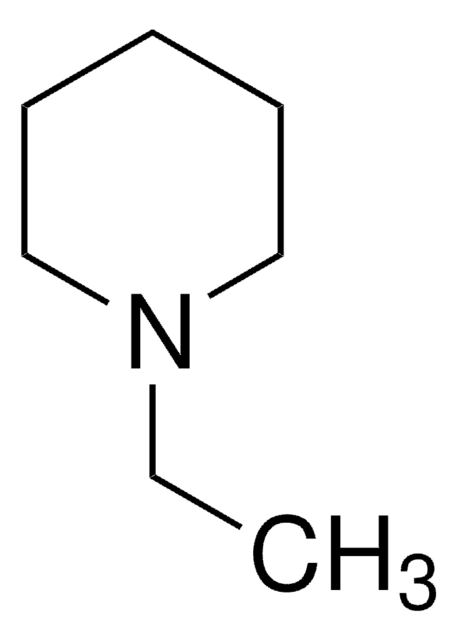M79204
N-Methylpyrrolidine
97%
Synonym(s):
1-Methylpyrrolidine, N-Methylpyrrolidine, N-Methyltetrahydropyrrole
About This Item
Recommended Products
assay
97%
form
liquid
bp
80-81 °C (lit.)
density
0.819 g/mL at 25 °C (lit.)
SMILES string
CN1CCCC1
InChI
1S/C5H11N/c1-6-4-2-3-5-6/h2-5H2,1H3
InChI key
AVFZOVWCLRSYKC-UHFFFAOYSA-N
Related Categories
Application
N-methyl pyrrolidine-zinc borohydride (ZBHNMP), a reducing agent for reduction of aldehydes, ketones, acid chlorides, and esters. ZBHNMP is also used in the reductive amination of aldehydes and ketones to their corresponding amines.[1][2]
N-alkyl-N-methyl-pyrrolidinium bis(trifluoromethanesulfonyl)imide ionic liquids.[3]
N-methylpyrrolidine-2-one hydrotribromide applicable as a catalyst for aziridination of alkenes.[4]
signalword
Danger
hcodes
Hazard Classifications
Acute Tox. 3 Oral - Acute Tox. 4 Inhalation - Aquatic Chronic 2 - Flam. Liq. 2 - Skin Corr. 1A
Storage Class
3 - Flammable liquids
wgk_germany
WGK 3
flash_point_f
-0.4 °F - closed cup
flash_point_c
-18 °C - closed cup
ppe
Faceshields, Gloves, Goggles, type ABEK (EN14387) respirator filter
Choose from one of the most recent versions:
Already Own This Product?
Find documentation for the products that you have recently purchased in the Document Library.
Customers Also Viewed
Our team of scientists has experience in all areas of research including Life Science, Material Science, Chemical Synthesis, Chromatography, Analytical and many others.
Contact Technical Service

